
Ceratophora is a genus of agamid lizards found in Sri Lanka. The male has a horn on its snout.
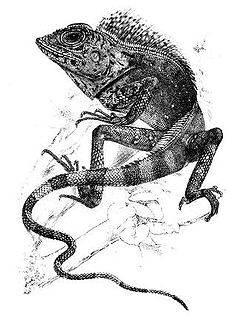
Gonocephalus is a genus of agamid lizards endemic to southeast Asia.

Monilesaurus ellioti, or Elliot's forest lizard, is a species of arboreal, diurnal, lizard in the family Agamidae, endemic to the Western Ghats, India.

Calotes maria, called commonly the Khasi Hills forest lizard, is a species of lizard in the family Agamidae. The species is endemic to South Asia.
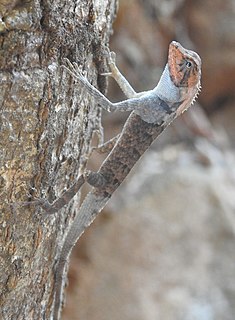
Monilesaurus rouxii, commonly known as Roux's forest lizard, Roux's forest calotes, or the forest blood sucker, is a species of arboreal, diurnal, agamid lizard, which is endemic to hills of peninsular India. In July 2018, it was proposed that the species should be transferred to the new genus Monilesaurus.

Draco blanfordii, commonly known as Blanford's flying dragon, Blanford’s flying lizard, or Blanford's gliding lizard, is a species of "flying" lizard in the family Agamidae. The species is endemic to Asia, and is capable of gliding from tree to tree.

Draco maculatus, commonly known as the spotted flying dragon or spotted gliding lizard, is a species of agamid flying lizard endemic to Southeast Asia. It is capable of gliding from tree to tree.

Japalura tricarinata is a species of agamid lizard endemic to Asia.

Otocryptis beddomii, commonly known as the Indian kangaroo lizard, is a diurnal, terrestrial, insectivorous agamid lizard, endemic to the Western Ghats of South India.

Phrynocephalus theobaldi is a species of lizard in the family Agamidae. The species is endemic to Asia.

Blanford's rock agama is species of lizard in the family Agamidae. The species is endemic to Peninsular India. One of two species in the genus, P. blanfordanus is found mainly to the east of the distribution of P. dorsalis. Unlike the other species, the male P. blanfordanus in breeding season has the red body color restricted to the head and lacks the broad dorsal stripe.
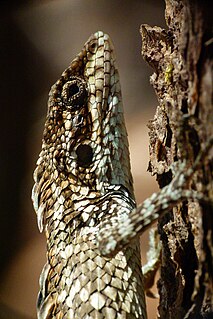
Salea horsfieldii, commonly known as Horsfield's spiny lizard or the Nilgiri salea, is a species of lizard in the family Agamidae. The species is endemic to the Nilgiri Hills of India. It is found mainly in the high altitude grassy hills. A related species, Salea anamallayana, is found in the grassy hills of the Anaimalai Hills.
Beddome's day gecko is a species of lizard in the family Gekkonidae. The species is endemic to India.
Crossobamon orientalis, commonly called the Sind gecko, is a species of gecko, a lizard in the family Gekkonidae. The species is endemic to South Asia.

The rhino-horned lizard, also commonly known as Stoddart's unicorn lizard and the mountain horned agama, is a species of lizard in the family Agamidae. The species is endemic to Sri Lanka. It is called kagamuva angkatussa-කගමුව අං කටුස්සා in Sinhala.

The common butterfly lizard, or simply the butterfly lizard, is a widespread species of lizard in the family Agamidae. The species is native to Asia.
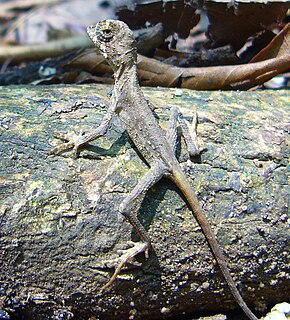
Otocryptis wiegmanni, commonly called the brown-patched kangaroo lizard, Sri Lankan kangaroo lizard or Wiegmann's agama, is a small, ground-dwelling agamid lizard endemic to Sri Lanka.
Bronchocela smaragdina, also commonly known as Günther's bloodsucker, is a Southeast Asian species of agamid lizard.
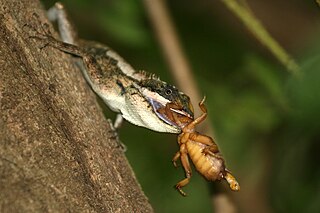
Calotes ceylonensis, commonly known as the painted-lipped lizard or the Ceylon bloodsucker, is a species of lizard in the family Agamidae. It is one of four Calotes species endemic to Sri Lanka.
Kaestlea beddomii, also known commonly as Beddome's ground skink, is a species of lizard in the family Scincidae. The species is endemic to the Western Ghats of India.

















